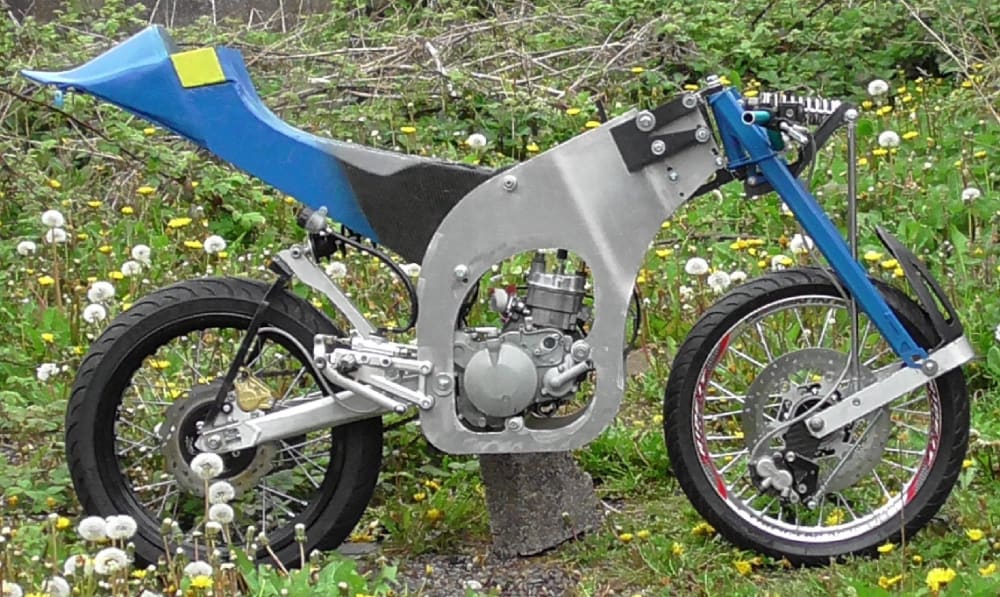Motorcycle design is at a crossroads where electronic aids are presently being deployed not to enhance performance but to rectify the performance deficiencies present due to poor design, in particular that associated with telescopic forks.
Only by starting with optimized geometry and designs to correct the overall design and then after add electronic aids - which may not be required - can motorcycle performance progress satisfactory offering a faster safer design of motorcycle.
To begin, a theory was devised in the 1990s regarding how gyroscopic precession associated with the front wheel governs front wheel diameter, wheelbase and steering-head angle. This theory was made freely available to all, which determines bicycles will have an ideal steering-head angle around 17 degrees and motorcycles around 15 degrees (due to a longer wheelbase and smaller front wheel diameter).
Next the car industry provided the ideal value for the wheel travel path of 11 degrees rearward, where this value provides the best compromise between braking dive and suspension motion.
Regarding aerodynamics, a large frontal venturi was opened to flow air between the rider's legs to then split exiting behind the rider and with the remaining airflow exiting out the rear. A similar design claimed a 69% reduction in aerodynamic drag but it is impractical, where as the concept deployed here is both practical and beneficial to saving energy and faster travelling speeds.
The motorcycle's center of mass was lowered and the rider elevated to accommodate this aerodynamic design to give advantages associated with both high and low center of gravity.
The dynamic plane of the motorcycle slopes forward so the rider can have a central position benefitting from precise steering yet at reduced risk of crashing.
The main frame was braced with tensioning blocks that can be adjusted to tune the chassis plus components are designed not to resonate between 65-70 Hertz where cornering chatter is known to occur.
Front suspension was provided by trailing link with the above geometry applied and with the wheel travelling in a beneficial rearward arc where reduced braking dive was engineered to further reduce chassis pitch.
Engine is a two-stroke designed to pollute less, in particular NoX, and could have a viable future once again.
The overall concept has now been tested with riders reporting the most natural feeling, lighter more precise handling, increased control and a travelling sensation of lightness. No known motorcycle built to date can compare with the performance advantages on offer here where chassis designs are suitable for all types of motors be it internal combustion, electric or hydrogen powered.
Like this entry?
-
About the Entrant
- Name:Robert Rae
- Type of entry:individual
- Patent status:none


